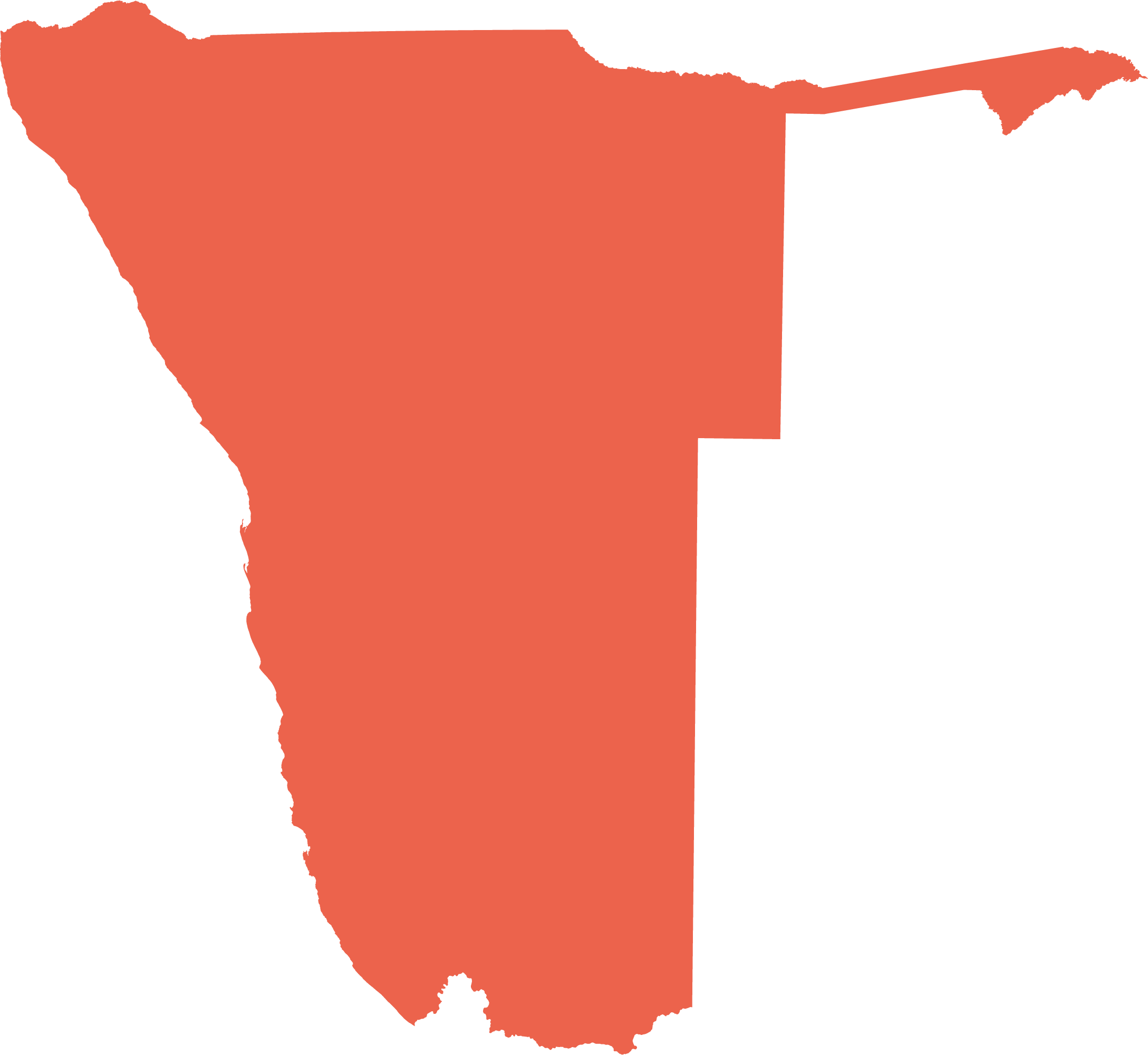Surface waters
While permanent – or perennial – surface waters are rare in Namibia, the country's surface has numerous features that have been shaped by water, hold it for varying periods of time and drain it away following good rains. These perennial and ephemeral wetlands are not only sources of water, but many are also important productive ecosystems, supporting a diversity of plants and animals.
Surface water comes in several forms:
- Flowing rivers that may have associated floodplains, swamps or marshes, deltas or river mouths.
- Natural, well-vegetated standing waters, such as swamps, vleis, springs and seeps.
- Natural standing waters, which have little or no wetland vegetation, such as lakes, sinkholes and pans, or constructed dams.

Photo: A Jarvis
Like many of Namibia's westward-flowing ephemeral rivers, the Tsauchab never reaches the sea. It is best known for its terminus in the dunes at Sossusvlei.
4.01 Namibia's surface waters and river catchments1

Only the rivers in the northeast and along the southern and northern borders of Namibia are perennial, carrying water all through the year. All other rivers and streams in the many catchments within Namibia's borders are ephemeral, only having surface water following good rains.
A watershed divides Namibia from the northwest to the southeast, as shown on this map. Hydrological conditions to the west and east of the divide are very different because of their dissimilar topography, geology and soils. In the west, surface waters are drained rapidly along welldefined watercourses over steep and rocky landscapes until they reach their gently sloping, sandy western extremities; these rivers lend themselves to storage dams. Springs and seeps of groundwater sustaining green oases are also a feature of these southern- and western-flowing ephemeral rivers. By contrast, drainage to the east of the watershed is over gently sloping, sandy substrates along poorly defined watercourses. Much of this slowmoving water soaks into the sands before it has travelled much distance. Heavy rains in this area also fill clay-based, shallow depressions forming a mosaic of pans.
All of Namibia's perennial rivers carry water from catchments with higher rainfall far beyond its borders. Nevertheless, they provide water to most people in Namibia's densely populated northern areas, supply several irrigation schemes, and generate up to 40 per cent of the country's electricity. Namibia's reliance on foreign supplies of water places the country in a vulnerable position.

